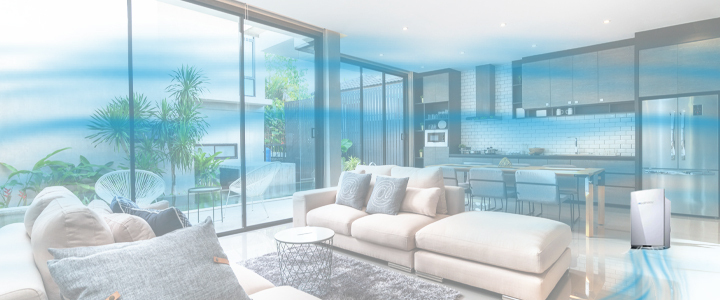
Indoor Air Quality has been the talk of the town since early 2020. Why? January 2020 began with tidal waves filled with unprecedented challenges brought over to Malaysia. The first case of COVID-19 was detected and traced back to 3 Chinese nationals who previously had close contact with an infected person in Singapore. Malaysia and the whole world changed imminently.
Though the government has declared that the country has transitioned to an endemic phase in April 2022, we are gradually adjusting to the new normal, continuing our lives with the disease. Human lives are still in peril as academic establishments are up and running again, and employees return to the office. There appear to be numerous new challenges that we must address. How do we protect ourselves and other people in the so-called new normal after COVID-19?
The COVID-19 Virus and the Air We Breathe
People infected with COVID can expel particles and droplets of respiratory fluids containing the SARS CoV-2 virus into the air because COVID-19 can spread via airborne particles and droplets. The environments in which the COVID-19 virus spreads more easily are crowded places, close-contact settings, and confined spaces with poor ventilation. COVID-19 spread is especially dangerous in areas with these 3Cs.
Optimal Indoor Air Care Strategies
There is no single solution to improving indoor air quality; it requires a multifaceted approach considering ventilation, fresh air intake, pressure, humidity, temperature, and filtration. When combined with other preventative measures, good indoor air quality management can help reduce the spread of COVID-19. When considering how to address IAQ, employers should consider the following steps:
- Maintaining recommended humidity and temperature levels
- Employing a monitoring system to ensure that everything is working efficiently
- Adequate and proper ventilation for proper flow and distribution of air
- Utilising air filtration systems with DFS Technology (able to capture particles of down to 0.007 microns)
- Minimising the number of persons in a space at the same time
- Requiring occupants to maintain a safe physical distance from others
- Requiring occupants to wear well-constructed, well-fitting masks
Indoor Air Quality Care: A Way of Life Post-Covid 19
The COVID-19 virus was not the first to infect people worldwide and is unlikely to be the last. Even after the current pandemic has passed, contaminants in the air and viral infections will challenge indoor air quality. COVID-19, however, has altered our perception of and concern for the air we breathe. Unlike water, if the water we are drinking is contaminated, we can still find a replacement with bottled water.
However, we have no choice over the air we breathe; we cannot buy the air we breathe: if we fail to care for and cherish the air we breathe, we won’t be able to live. That is why indoor air quality is so pertinent in our lives. Let us all do our part to improve and optimise the indoor air conditions of our spaces.

